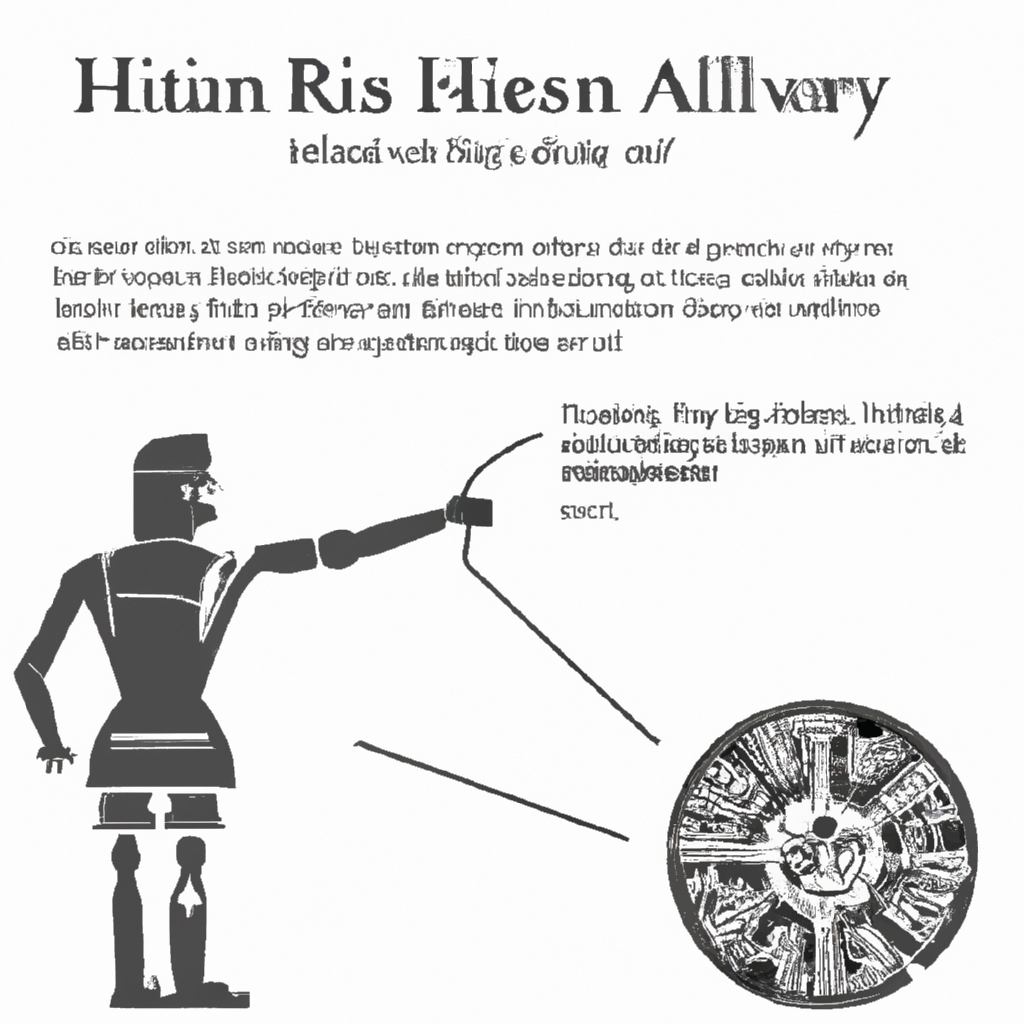-
Table of Contents
ing the Past.
Unlock the Secrets of the Past with AI: Automation and Analysis for Historical Discovery.
Introduction
The history of Artificial Intelligence (AI) is a long and complex one, with its roots stretching back to the early days of computing. AI has been used to automate and analyze data in a variety of ways, from the development of computer vision algorithms to the use of natural language processing to understand human language. AI has also been used to help researchers in a variety of fields, from medicine to economics, to better understand the world around them. AI has become an integral part of research, and its use has been instrumental in helping us to better understand the world around us.
How AI is Revolutionizing Historical Research
AI is revolutionizing the way we do historical research. By leveraging the power of artificial intelligence, researchers are able to quickly and accurately analyze large amounts of data to uncover new insights about the past.
AI-driven research is helping to uncover new information about historical events and people. For example, AI-driven facial recognition technology is being used to identify people in historical photographs. This technology can help researchers to identify people in photographs that were previously unknown.
AI is also being used to analyze large amounts of text. Natural language processing (NLP) algorithms can be used to quickly analyze large amounts of text to uncover patterns and trends. This can help researchers to identify new connections between people, events, and ideas.
AI is also being used to analyze large amounts of data from sources such as census records, tax records, and other government documents. AI-driven analysis can help researchers to uncover new insights about the past that would have been impossible to uncover without the help of AI.
AI is also being used to create virtual reconstructions of historical sites. By combining data from multiple sources, AI-driven reconstructions can help researchers to better understand how a site looked in the past.
AI is revolutionizing the way we do historical research. By leveraging the power of artificial intelligence, researchers are able to quickly and accurately analyze large amounts of data to uncover new insights about the past. AI-driven research is helping to uncover new information about historical events and people, and is helping researchers to better understand the past.
The Impact of AI on Historical Data Collection and Analysis
The impact of artificial intelligence (AI) on historical data collection and analysis is undeniable. AI has revolutionized the way we collect and analyze data, making it easier and faster than ever before.
Historical data collection has traditionally been a labor-intensive process, requiring researchers to manually search through archives and documents to find the information they need. AI has changed this process by automating the search process, allowing researchers to quickly and easily find the data they need. AI can also be used to identify patterns in the data, making it easier to draw meaningful conclusions from the data.
AI has also made it easier to analyze historical data. AI algorithms can be used to identify trends and patterns in the data, allowing researchers to gain insights that would have been impossible to uncover without AI. AI can also be used to identify correlations between different data points, allowing researchers to gain a better understanding of the data.
Finally, AI can be used to create visualizations of the data, making it easier to understand and interpret the data. AI-generated visualizations can be used to quickly identify trends and patterns in the data, allowing researchers to gain a better understanding of the data.
In short, AI has revolutionized the way we collect and analyze historical data. AI has made it easier and faster to collect and analyze data, allowing researchers to gain insights that would have been impossible to uncover without AI. AI has also made it easier to visualize the data, allowing researchers to quickly identify trends and patterns in the data.
Exploring the Use of AI in Historical Text Mining
The use of Artificial Intelligence (AI) in historical text mining is an exciting and rapidly growing field of research. AI has the potential to revolutionize the way we study and interpret the past. By leveraging the power of AI, researchers can quickly and accurately analyze large amounts of historical text and uncover patterns and insights that would otherwise remain hidden.
Historical text mining is the process of extracting meaningful information from large collections of historical documents. This process can be used to uncover trends, identify relationships, and gain insights into the past. AI can be used to automate this process, allowing researchers to quickly and accurately analyze large amounts of data.
AI can be used to identify patterns in historical texts that would otherwise remain hidden. For example, AI can be used to identify recurring themes in a collection of documents, or to identify relationships between different documents. AI can also be used to identify and classify documents based on their content. This can be used to quickly identify documents that are related to a particular topic or time period.
AI can also be used to generate summaries of historical texts. This can be used to quickly and accurately summarize large amounts of text, allowing researchers to quickly gain an understanding of the content of a document. AI can also be used to generate visualizations of historical texts, allowing researchers to quickly identify patterns and relationships between documents.
Finally, AI can be used to generate predictions about the future based on historical data. By analyzing large amounts of historical data, AI can be used to identify patterns and trends that can be used to make predictions about the future. This can be used to inform decision-making and help researchers better understand the past.
The use of AI in historical text mining is an exciting and rapidly growing field of research. By leveraging the power of AI, researchers can quickly and accurately analyze large amounts of historical text and uncover patterns and insights that would otherwise remain hidden. AI can be used to identify patterns, classify documents, generate summaries, and make predictions about the future. This can help researchers better understand the past and make informed decisions about the future.
AI and the Preservation of Historical Artifacts
The preservation of historical artifacts is an important part of preserving our cultural heritage. As technology advances, so too does the potential for Artificial Intelligence (AI) to help us in this endeavor. AI can be used to identify, analyze, and even restore artifacts, making them more accessible to the public.
AI can be used to identify artifacts. By using computer vision, AI can recognize patterns in images and compare them to a database of known artifacts. This can help to quickly identify artifacts and provide more accurate information about them.
AI can also be used to analyze artifacts. By using machine learning, AI can be trained to recognize patterns in artifacts and provide insights into their age, origin, and other characteristics. This can help to better understand the history of an artifact and its significance.
Finally, AI can be used to restore artifacts. By using deep learning, AI can be trained to recognize patterns in damaged artifacts and fill in missing pieces. This can help to restore artifacts to their original condition and make them more accessible to the public.
AI is an invaluable tool for preserving historical artifacts. By using AI to identify, analyze, and restore artifacts, we can ensure that our cultural heritage is preserved for future generations.
AI and the Future of Historical Research and Education
AI (Artificial Intelligence) is revolutionizing the way we do historical research and education. AI technology is being used to automate tedious tasks, such as data entry and analysis, and to uncover patterns and insights that would otherwise be impossible to detect. AI can also be used to create virtual environments that allow students to explore history in a more immersive and interactive way.
AI is already being used to help historians uncover new information about the past. For example, AI-powered facial recognition technology can be used to identify people in historical photographs, allowing researchers to uncover previously unknown details about the people in the photos. AI can also be used to analyze large amounts of text, such as historical documents, to uncover patterns and trends that would otherwise be difficult to detect.
AI is also being used to create virtual environments that allow students to explore history in a more immersive and interactive way. For example, AI-powered virtual reality (VR) simulations can be used to recreate historical events, allowing students to experience them as if they were actually there. AI can also be used to create interactive 3D models of historical sites, allowing students to explore them in a more engaging way.
The use of AI in historical research and education is still in its early stages, but its potential is immense. AI technology can help us uncover new information about the past, create more immersive and interactive learning experiences, and automate tedious tasks. As AI technology continues to develop, it will open up new possibilities for historical research and education.
Conclusion
AI and automation have revolutionized the way we approach history research. Automation has enabled us to quickly and accurately analyze large amounts of data, while AI has enabled us to uncover patterns and trends that would have been impossible to detect without the help of computers. AI and automation have also enabled us to explore new ways of understanding the past, such as through the use of natural language processing and machine learning. As AI and automation continue to evolve, they will continue to play an increasingly important role in the study of history.





